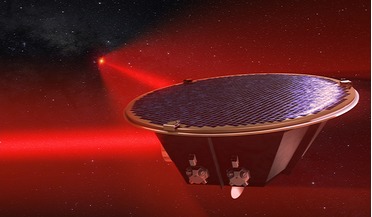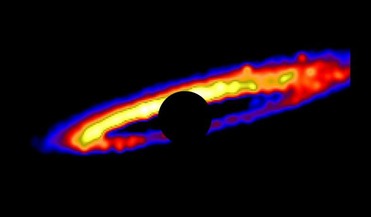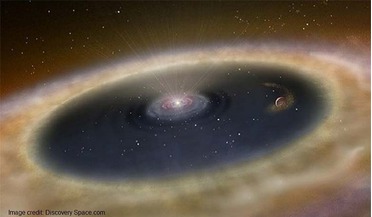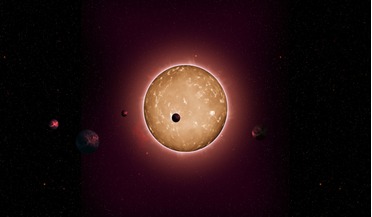 21 June 2017
LISA gets green light from ESA
21 June 2017
LISA gets green light from ESA
... in ESA's Cosmic Vision programme and its aim is to find and study a large number of extrasolar planetary systems, in particular those that mirror our own solar system i.e terrestrial-type planets in the habitable zone around solar-like stars.
 01 August 2019
One of Ten Billion Earths
01 August 2019
One of Ten Billion Earths
...of the ‘astronomical’ numbers involved in the study of the universe and its estimated population of 100 sextillion planetary systems (that’s 100 followed by 21 noughts!). According to the author, “Earth is estimated to be one of several billion Earth...
 17 March 2017
Giant Jupiter-like planet gives a rare peek at alternative planet formation
17 March 2017
Giant Jupiter-like planet gives a rare peek at alternative planet formation
... we have a snapshot of a baby star that just formed its planetary system," said Smadar Naoz, a UCLA assistant professor of physics and astronomy...it does by focusing on the effects of a planetary-mass perturber orbiting within the disk. However the ...
 11 December 2019
Water abundance lower than expected on exoplanets
11 December 2019
Water abundance lower than expected on exoplanets
... for signs of sodium (Na) and potassium (K) as these elements can provide important constraints on how planets are formed. Planetary systems, like our own, are born from a giant cloud of matter called a protoplanetray disk. First the star...
 02 December 2015
Displaced dusty planet booted out of its birthplace
02 December 2015
Displaced dusty planet booted out of its birthplace
...planet is also unusual in that its orbit is possibly tilted 21 degrees away from the plane of the inner planetary system, whereas most planets typically lie close to a common plane,” explains Kalas. It is clear that further observations of HD 106906b...
 24 November 2021
Astronomers discover more than 350 possible new exoplanets
24 November 2021
Astronomers discover more than 350 possible new exoplanets
...signals from an alternative astrophysical source that mimics a planetary signature. Then, along with colleagues, Zink used ... understanding of the parameters for how planets and planetary systems develop. “The discovery of each new world provides...